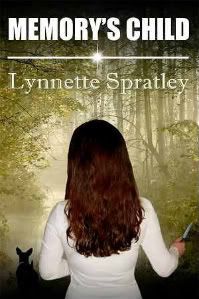Many thanks to my friend and fellow fictioneer, Jerilyn Dufresne, author of the charming and funny Sam Darling mystery series. She tagged me in her recent blog post (Read it here). Thanks, Jer! I enjoyed the challenge.
What are you working on now?
Lately, I’ve been emulating a scattergun – I’m working on four books. In addition to researching and writing the sequel and prequel to Memory’s Child, I’m also updating and revamping a mystery/suspense novel (Dying to Meet You) and a romance/adventure novel (Trial Run). Both of the latter are set in Florida.
How does my work differ from others in its genre?
Well, how many books do you know of that were generated by a can of tuna? Seriously, I found myself in a small, neighborhood grocery store one day, staring at an entire shelf section packed with cans of tuna. I thought about all the grocery stores in my city and all the cans of tuna they stocked, then all the stores in the country and so on. The idea of all those dead fish was staggering, and I wondered how long the ocean could continue to pro
duce so much fish if the population keeps growing. You see where that kind of thinking is likely to go.
Memory’s Child is more than a cautionary or post-apocalyptic tale about humanity outgrowing the resources of this planet, though. The idea of prejudice as a fundamental part of humans’ makeup is another of the book’s premises, and it’s an important one, I think. In Memory’s Child, the circumstances of the past have changed the focus of prejudice. As Shelana, the protagonist says, humans no longer have “distinctions of color or collar or cash,” but have replaced that with another kind of prejudice – against intellect. “Hate what you do not comprehend, wage war on what you fear, and destroy what you cannot have. Prejudice is as old as mankind,” she says. I thought that idea was unique enough to explore.
Why do I write what I do?
Good question, and I have no idea. Much of the story in Memory’s Child simply erupted shortly after the tuna incident. I was not planning a novel, had not thought about this story, and had no idea it lurked in my pen, waiting to attach itself to paper. I wrote the word “aberration” on a blank page in my notebook, and from that point forward, I just went along for the ride. If you can imagine trying to write, longhand, every word of a book as it is read to you, that’s what it was like getting Memory’s Child on paper. I wrote as fast as the pen would move, terrified that I would miss something important, eager to read what would happen next.
Over the c ourse of about four days, I learned the story as it appeared on the page. I only stopped writing when I fell asleep, pen in hand. I still have the original manuscript with odd little squiggles marking the page. My husband, Randy, brought me food and made sure nobody bothered me with visits or phone calls.
ourse of about four days, I learned the story as it appeared on the page. I only stopped writing when I fell asleep, pen in hand. I still have the original manuscript with odd little squiggles marking the page. My husband, Randy, brought me food and made sure nobody bothered me with visits or phone calls.
Those were among the very best days of my life. Later, typing the manuscript from those handwritten pages, I added descriptions and other details that weren’t in the original narrative. The story came first, the details later.
How does my writing process work?
Sadly, no other stories have flowed from my pen the way Memory’s Child did. Writing would be so much easier if they did! Instead, I write more than I should, adding and subtracting scenes as I go, until I find what works. I still write longhand and I do not outline as many authors do. Once I tell the story, I’m done, and an outline is, to my odd brain, the same as telling the story. The book would never get past the outlining stage. Instead, I start at the beginning and just keep going to the end. When the story is written, I add in transitions and descriptions (I prefer dialogue and action to writing description). This is my first edit. The whole thing is put away for at least a month to let the story steep. Then I pull it out and edit, edit, edit until I’m happy with it, which can take months. I still itch to edit Memory’s Child as ideas continue to occur to me.
What are my writing plans for the future?
Once the prequel and sequel are finished, I plan to complete the rewrite of Dying to Meet You, then Trial Run. I have a couple more novels in the very-rough-draft stage: Fair Warning and Katie Enigma. My goal is to finish at least the first four this year, if recent health issues allow. After that, I’d like to take my time on Fair Warning, especially, since the plot of that one is quite intricate.
I haven’t warned them, but I’d like to tag Allyson K. Abbott, author of the Mack’s Bar mysteries, a unique new series, and Lauren Clark, author of Dancing Naked in Dixie, Stay Tuned and Stardust Summer.







